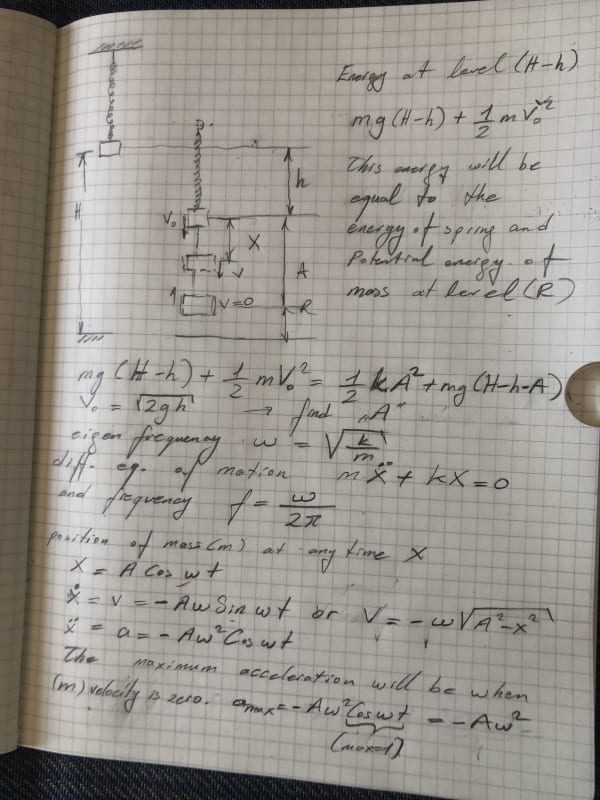hootrpootr
Aerospace
- Feb 28, 2020
- 27
Hello,
I have an interesting spring energy problem that I’m trying to solve. I have a spring (known k) attached to a releasable hook at the top and a mass (known m) attaches to the bottom. This is a drop test, so when the releasable hook detaches, the spring and mass fall together a set distance (h). At that point, the spring engages and extends an unknown x.
I believe I know how to determine x using energy equations. Beginning energy is due to the height of the system (h+x) + the initial spring extension due to the mass hanging at rest. The end energy should be due to the spring energy of the system when it is fully extended.
Now finally, my question is: I can determine x, but how do I determine the “g’s” acting on the mass due to the spring? This is a requirement from the customer. Isn’t the g force just the acceleration/9.81m/s2?
Thanks! Hopefully this all makes sense.
I have an interesting spring energy problem that I’m trying to solve. I have a spring (known k) attached to a releasable hook at the top and a mass (known m) attaches to the bottom. This is a drop test, so when the releasable hook detaches, the spring and mass fall together a set distance (h). At that point, the spring engages and extends an unknown x.
I believe I know how to determine x using energy equations. Beginning energy is due to the height of the system (h+x) + the initial spring extension due to the mass hanging at rest. The end energy should be due to the spring energy of the system when it is fully extended.
Now finally, my question is: I can determine x, but how do I determine the “g’s” acting on the mass due to the spring? This is a requirement from the customer. Isn’t the g force just the acceleration/9.81m/s2?
Thanks! Hopefully this all makes sense.

